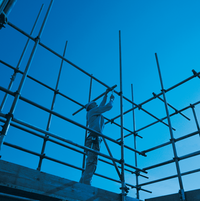Construction Site
The powerful tools with which you can build Debian packages (also used in Ubuntu) are available to any user. You can even save time by compiling them by hand.

The powerful tools with which you can build Debian packages (also used in Ubuntu) are available to any user. You can even save time by compiling them by hand.
No distribution provides its users with more packages than Debian. This implies that it also needs a well-developed system for building packages. Like its counterparts on RPM-based systems, it automates both source code compiling and creating packages. This article introduces the Debian build system that creates Debian packages from a program's source code fully automatically. I will explain the powerful tools that are available and provide guidance on improving your distro.
To use the Debian build system with Ubuntu, you first need to install the build-essential, debhelper, dh-make, quilt, fakeroot, and devscripts packages. Next, export two environmental variables with your email address and name as shown below. It's best to add these to your .bashrc.
export DEBMAIL="<e-mail_address>@<domain>.<tld>" export DEBFULLNAME="<first_name> <last_name>"
[...]